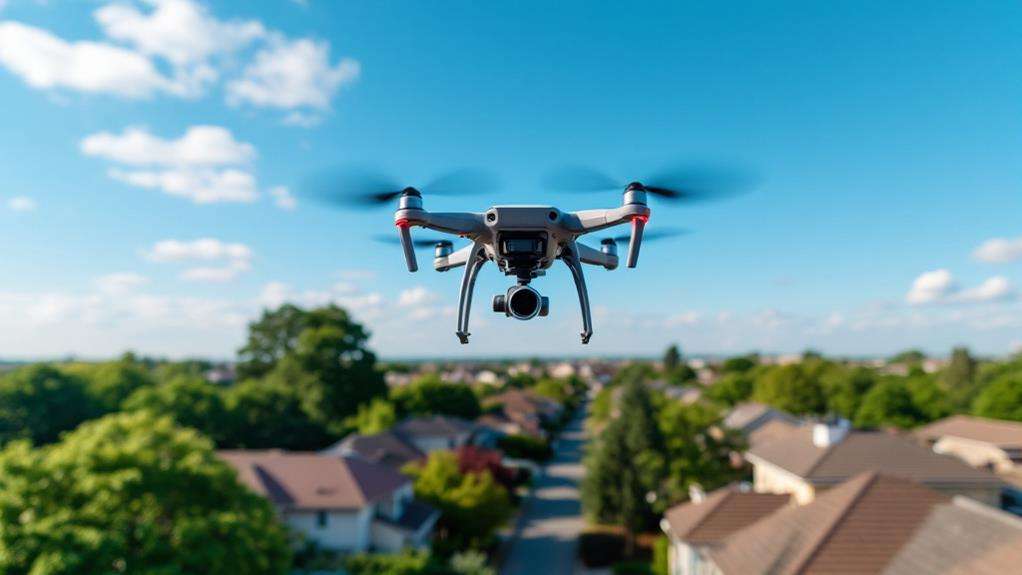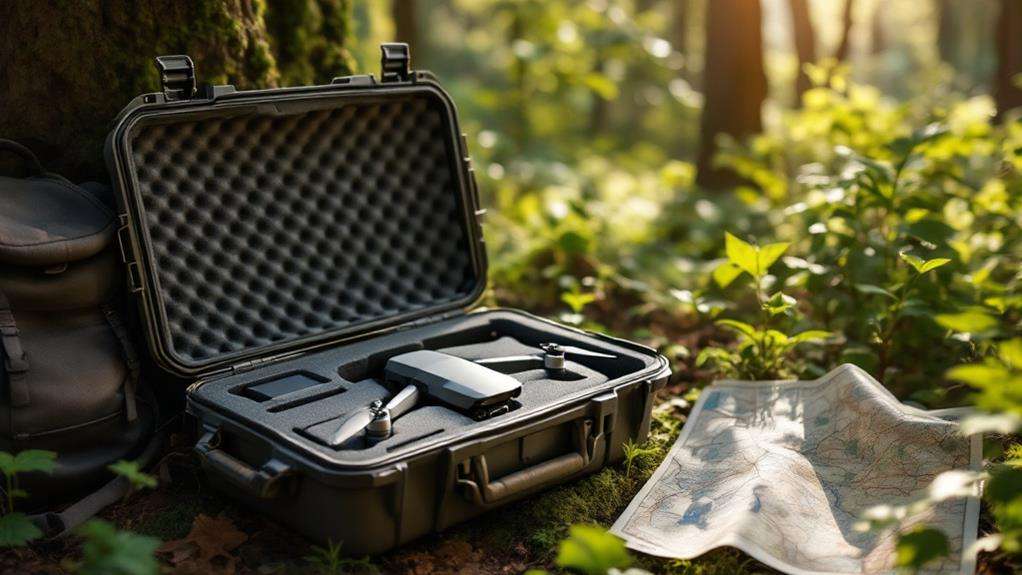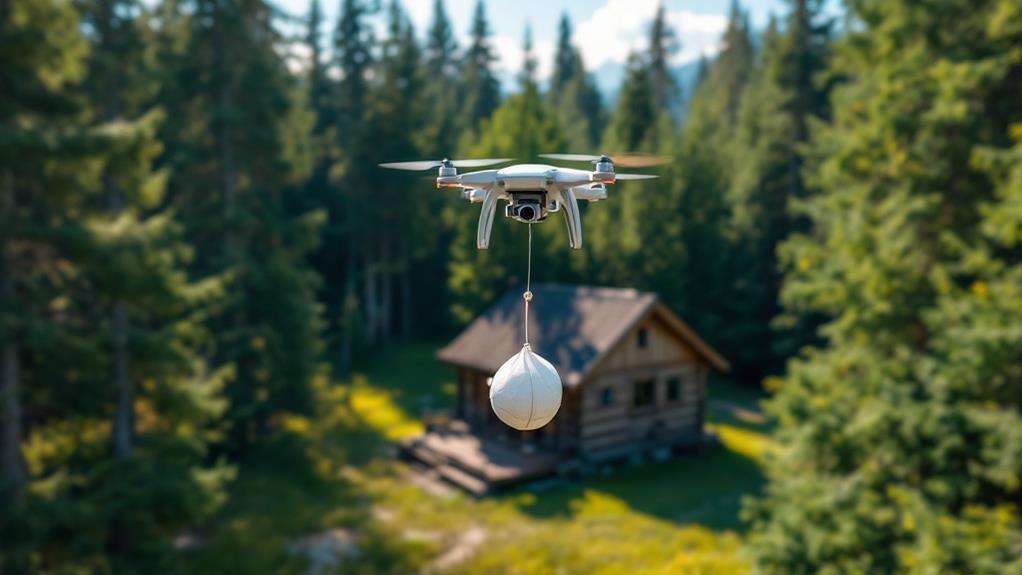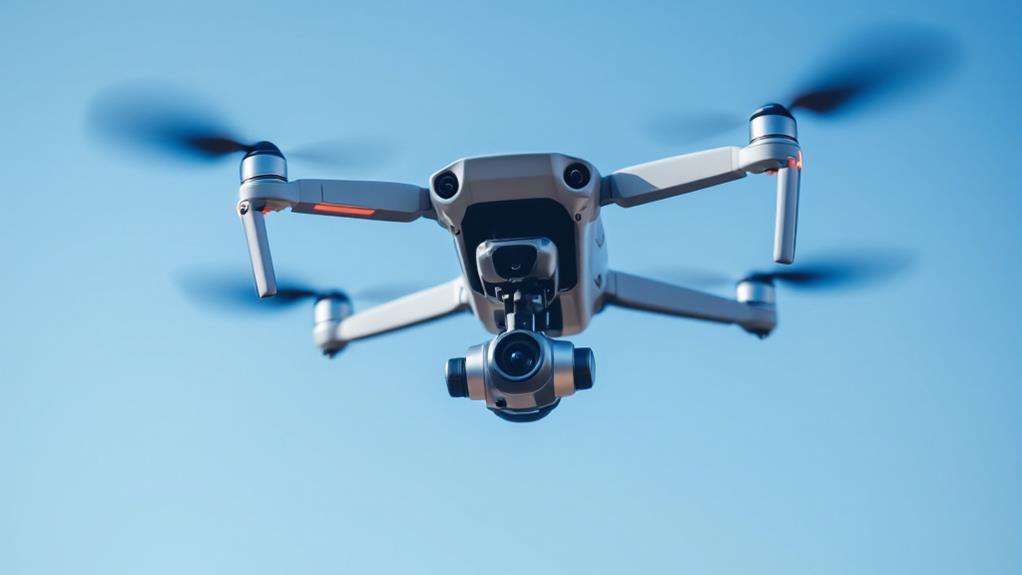Can Wind Flip a Drone?
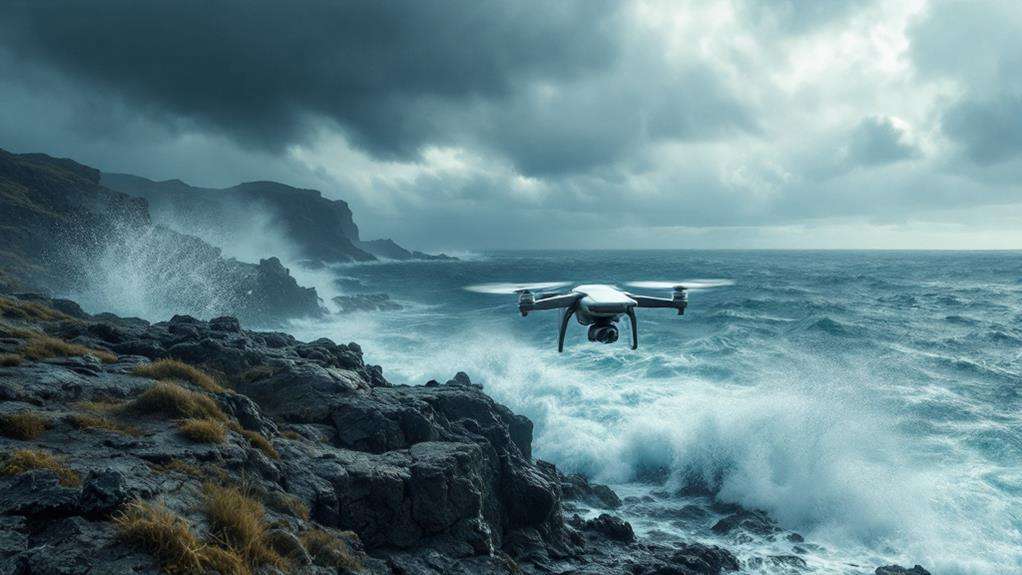
Yes, wind can flip a drone, especially in extreme conditions. When gusts exceed 50 knots, they can destabilize even the most advanced systems, like those in the Mavic 2 Pro. Understanding wind conditions using tools like the Beaufort scale helps you anticipate potential risks. High winds might slow down your drone or cause it to drift, while microbursts can introduce sudden turbulence. Initiating flights against the wind and being prepared for quick descents in emergencies enhance safety. Stay aware of weather forecasts and your drone's limits to reduce the risk of flipping. There's a lot more to explore on this topic.
Key Takeaways
- Strong winds, especially gusts over 50 knots, can flip drones in extreme conditions.
- Microbursts create intense downdrafts, introducing sudden turbulence that can destabilize drones.
- High winds exceeding a drone's forward speed can cause drifting, increasing the risk of flipping.
- Awareness of wind conditions and proper pre-flight checks are crucial to prevent drone flipping.
- Advanced control systems may struggle in turbulence, affecting drone stability in high wind scenarios.
Wind Impact on Drone Stability
Wind's capricious nature is a formidable challenge for drone stability. When you're flying a drone, strong winds can test its limits, and gusts exceeding 50 knots are particularly destabilizing. These high wind speeds can lead to flipping, especially if you're navigating extreme conditions like those found in tornadoes. Understanding the Beaufort scale is essential for assessing wind conditions, as it categorizes wind speeds and helps determine safe flying conditions. Even drones equipped with advanced computer control systems, like the Mavic 2 Pro, can struggle to maintain stability in the face of turbulence and wind shear.
High winds can significantly impact your drone's performance, slowing it down and potentially causing it to drift if the wind speed surpasses its maximum forward speed. You must assess wind conditions carefully before flight to avoid these hazards. Remember, strong gusts and the tilt caused by them may lead to motor shutoff if the angle becomes too steep, compromising control.
Microbursts, intense downdrafts with winds reaching up to 68 mph, are another concern that can affect stability, but that's a topic for later. For now, focus on maintaining a vigilant eye on wind conditions and adjusting your flight path to ensure your drone remains upright and on course.
Understanding Microbursts
Navigating the unpredictable nature of microbursts is critical for drone operators. These strong downdrafts, with windspeeds reaching up to 68 mph, can severely impact drone stability and alter your drone's flight path. Drones, equipped with advanced sensors, can enhance monitoring efficiency by providing real-time data analysis, which is crucial during such conditions. You'll find that during these sudden events, maintaining control becomes a significant challenge. Microbursts cause rapid changes in wind direction, introducing unexpected turbulence that can jeopardize your drone's stability.
When a microburst strikes, headwinds might increase your drone's speed, pushing it off course, while tailwinds can slow it down, complicating both takeoff and landing maneuvers. These phases are crucial, as your drone is particularly vulnerable to the effects of turbulence. Ensuring control during takeoff and landing is paramount, as these are the moments when a drone is most at risk of flipping due to sudden wind shifts.
Awareness of potential microburst conditions is essential. You need to understand how these weather phenomena can impact your operations. Staying informed about weather forecasts and wind conditions will help you anticipate microbursts, allowing you to adjust your flight path and maintain drone stability. Remember, preparation and vigilance are key to successfully navigating these powerful, unpredictable wind events.
Managing Battery Life
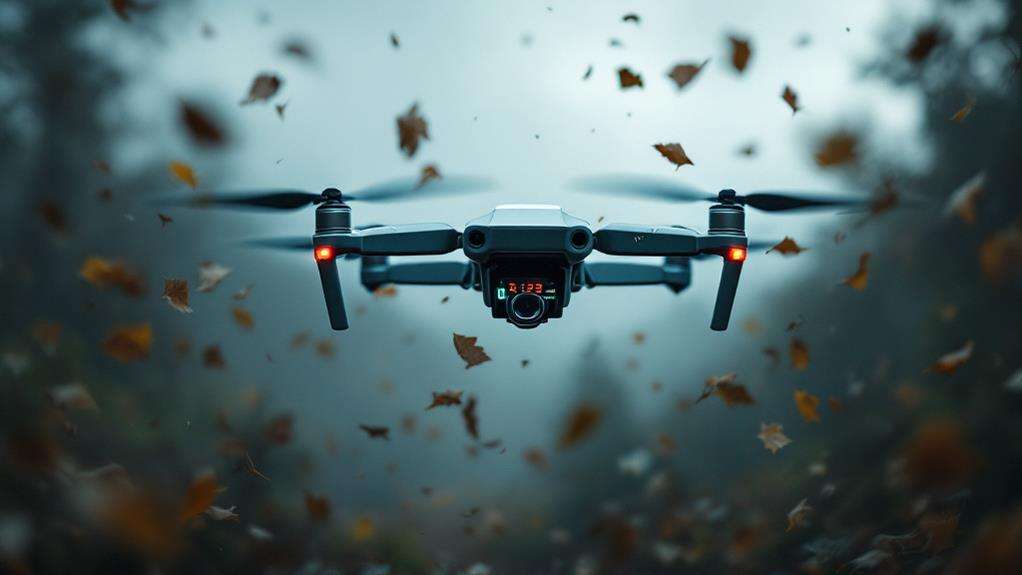
Managing your drone's battery life is crucial, especially when flying in windy conditions. Strong winds force your drone to work harder to maintain stability, which significantly depletes its battery life. As a pilot, you need to anticipate shorter flight times when encountering strong winds. Flying against these gusts demands more energy, reducing how long your drone can stay airborne. This is why carrying extra batteries becomes essential. They ensure you can extend your flying sessions without the risk of mid-flight failures.
Many drone operators tend to overestimate their battery's endurance, particularly in windy conditions. This miscalculation can lead to unexpected shutdowns and, consequently, unsafe landings. To avoid such situations, practice proper battery management. Regularly check your drone's battery status and plan your flights considering potential wind effects. This forward-thinking approach is key to preventing mid-flight failures and ensuring your drone returns safely.
Essential Flying Techniques
To master flying in windy conditions, you need to adopt essential techniques that enhance control and safety. Start your flight against the wind to ensure a safer return, enabling a controlled descent against potential gusts. For drone enthusiasts, understanding your drone's capabilities is crucial. Always perform pre-flight checks for wind conditions; optimal flying is when wind speeds don't exceed two-thirds of the speed of the drone.
Monitoring your battery power is vital, especially when flying in strong winds, as they can drain your battery faster, risking mid-flight failures. Use Sports Mode to boost rotor power, enhancing maneuverability and stability during high wind situations. Remember, anticipating potential drift during descent is key. Hover at a higher altitude and descend directly into the wind to prevent a flip due to strong winds.
| Technique | Benefit | Consideration |
|---|---|---|
| Start Against Wind | Ensures safer return | Requires planning your route |
| Monitor Battery | Prevents mid-flight failures | Increased energy demand |
| Use Sports Mode | Improves control and stability | May drain battery faster |
Emergency Protocols
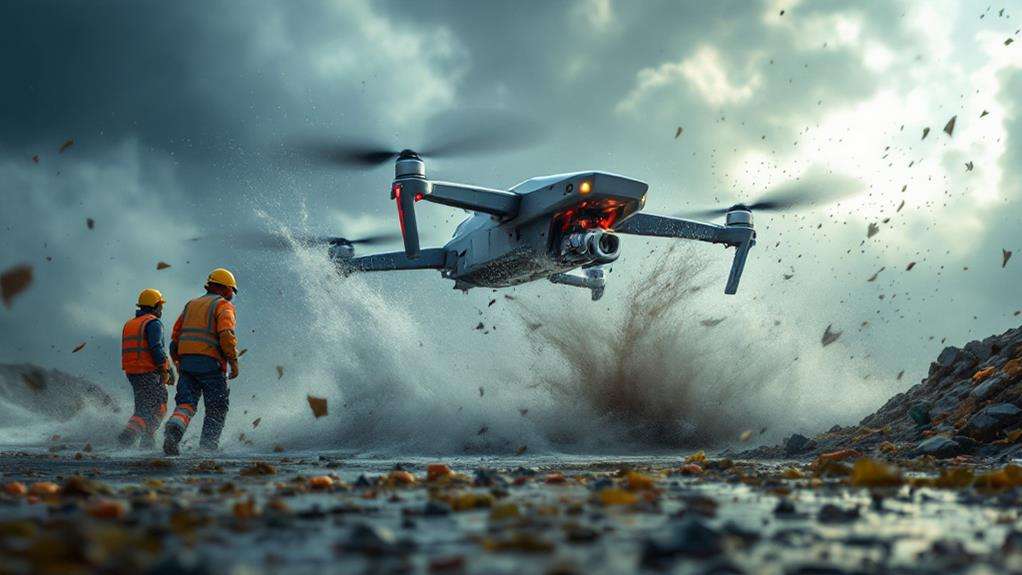
In the face of sudden high winds, quick action is essential to prevent losing control of your drone. Initiate an immediate descent to minimize the risk of drifting. This descent strategy is your first line of defense when unexpected gusts hit. Planning for emergency protocols involves identifying safe landing locations beforehand. This foresight ensures you can act swiftly if turbulent wind conditions arise, securing your drone's safety.
Maintaining control of the drone is crucial during these situations. Be aware of wind gradients as they can affect your descent strategy and influence the drone's behavior, especially during landing. If you own a drone from the Mavic line, familiarize yourself with its specific emergency procedures to handle high wind scenarios effectively. These guidelines can be invaluable when seconds count.
Switching to manual control and activating Sports Mode can significantly enhance your control during a return-to-home (RTH) scenario. This approach offers better stability amidst turbulent conditions. By preparing and practicing these emergency protocols, you can navigate high winds confidently and ensure your drone returns safely, even when faced with challenging weather. Always stay vigilant and proactive to protect your investment.
Community Insights and Experiences
Drone enthusiasts often share valuable insights from their collective experiences with high winds on online forums and communities. They often discuss how strong winds affect drone stability, noting that while tilting is common, flipping mainly happens in extreme conditions like tornadoes. In community discussions, many have praised the Mavic 2 Pro for its improved handling in windy conditions compared to older models. Anecdotal evidence shows that unexpected behaviors during strong winds can be worrisome, but with proper flying techniques and awareness, risks can be managed effectively.
Users often emphasize the importance of understanding wind conditions and maintaining proper altitude to mitigate risks. For instance, those with experience suggest that altitude maintenance helps in managing wind gradients, which can significantly influence drone stability. If you're flying in windy conditions, knowing how to adjust for these gradients is crucial.
Here's a quick comparison based on user feedback:
| Drone Model | Stability in Strong Winds | Common Issues |
|---|---|---|
| Mavic 2 Pro | High | Minor tilting |
| Older Models | Moderate | More instability |
| Custom Builds | Variable | Varies greatly |
Ultimately, while flipping is rare, awareness and preparation are key.

